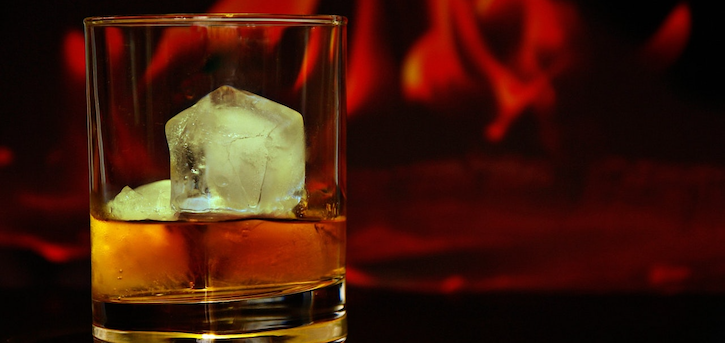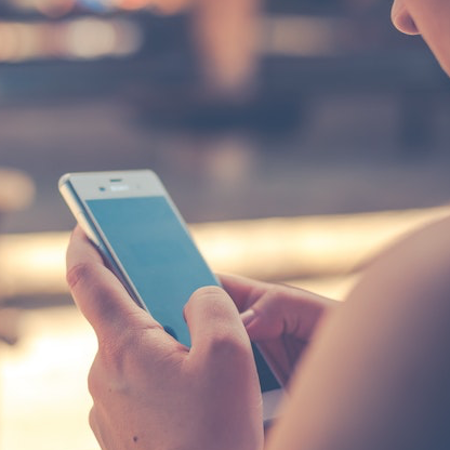mHealth App Not Effective for Patients with Alcohol Use Disorder, Study Says
More research needs to be done, the researchers suggest.

While the internet could help people cut down or quit drinking, mobile health (mHealth) apps might not be as effective, new research found.
More large, high-quality randomized control trial studies are needed to assess the effect of cue exposure therapy combined with urge-specific coping skills for individuals with alcohol use disorder.
But this therapy, when delivered with urge-specific coping skills as aftercare through group sessions or a mobile app, did not increase the effectiveness of the primary treatment, according to a study published in JMIR mHealth and uHealth.
Drinking and craving outcomes over time were not significantly different in the experimental groups — one of which went to group therapy and the other of which used an mHealth app — compared with usual aftercare.
The therapy group and the therapy app showed increased use of urge-specific coping skills compared to usual aftercare at post-treatment, but the effect decreased at the six-month follow-up. Researchers also noted no differences between the two experimental groups on any outcomes.
Cue exposure therapy is like bait for those with alcohol use disorder. Through the therapy, patients are confronted with alcohol and things associated with alcohol to prepare them to better handle their approach to drinking. While this type of therapy could be promising in treating alcohol use disorder in group sessions, researchers said it was unknown whether moving from group sessions to using an mHealth phone app is an effective delivery pathway.
Researchers from the University of Southern Denmark investigated whether cue exposure therapy as aftercare would increase the effectiveness of primary treatment with cognitive behavior therapy. The research team also sought to discover whether cue exposure therapy delivered through an mHealth app would be similarly effective to cue exposure therapy at group sessions.
To be eligible to participate in the study, individuals had to be between the ages of 18 and 80 years old and needed to complete the three-month primary treatment at the outpatient alcohol clinic. Primary treatment consisted of pharmacological and psychological treatment.
Those who did not speak Danish, had an acute psychotic disorder, severe cognitive impairment or terminal somatic illness could not participate in the study.
The research team randomized the participants into one of three aftercare treatment groups:
- Cue exposure therapy as group aftercare
- Cue exposure therapy as an mHealth app aftercare
- Aftercare as usual
Cue Exposure Therapy Aftercare Through Group Therapy
This aftercare was conducted according to a treatment manual for cue exposure therapy with urge-specific coping skills. The manual emphasized the importance of individuals being confronted with alcohol to reduce cue-induced cravings. During each group session, the participant was introduced or reintroduced to urge-specific coping skills and then required to practice the strategies learned while exposed to alcohol in vivo.
Coping strategies included waiting it out, thinking about the negative consequences of drinking, thinking about the positives of sobriety and alternative food and beverage intake.
Overall, participants went to therapy four times — every other week for eight weeks — for two hours each session.
Therapists, nurses and social workers ran the aftercare treatment.
Cue Exposure Therapy Aftercare Through an mHealth App

The researchers took the group intervention based on the treatment manual and transformed it into an mHealth app. For each user, the app featured different coping strategies and exposure material based on participant preference.
Alcohol exposure was simulated by selecting one of eight alcohol videos based on the participant’s preference. Participants could choose between beer, red or white wine, mixed alcoholic drinks and hard liquor.
The videos imitated therapist sessions and the alcohol became increasingly more appetizing during the session to induce cue-controlled cravings. The app, which was only accessible during operating hours of the outpatient alcohol facility, had a number to a therapist in case cravings were too uncontrollable.
Participants could use the app once a day, four times a week for a maximum of 32 total sessions at 15 minutes each.
While participants in this group were supposed to receive a reminder each week, the software failed to send reminder texts to patients to use the app regularly.
Usual Aftercare
Participants randomized to this group had one individual follow-up session. During the session, the participant was asked how they were doing and were offered a brush-up of coping strategies taught during primary treatment with cognitive behavioral therapy if needed.
The session lasted one hour and was offered eight weeks after discharge from primary treatment.
How Researchers Measured the Groups’ Effectiveness
The research team measured alcohol consumption through Timeline Follow Back, which uses a calendar to identify alcohol consumption patterns in the last 30 days. From this measure, the researchers concluded that sensible drinking involved women drinking 14 or less drinks per week and men drinking 21 or less. Sensible drinking also included drinking less than five drinks per day.
The research team also used the calendars to measure abstinence, drinking days and days with excessive drinking.
To measure cravings and urge-specific coping skills, the researchers used the Visual Analog Scale and the 22-item Urge-Specific Coping Skills questionnaire.
The scale measures the degree of alcohol cravings on scales ranging from zero to 10. Participants were supposed to report the mean and peak levels of cravings experienced during the last 30 days.
The questionnaire has 11 coping strategies that the patient might be using and the effectiveness of them when experiencing cravings or urges to drink.
In total, 93% of the participants completed the post-aftercare assessment and the six-month follow-up — 94% in the cue exposure therapy group, 91% in the mHealth app group and 95% in aftercare as usual.
Based on the observations of the research team and the reports from participants, there were no predicted mean differences when the two experimental groups were compared with aftercare as usual. There was also no difference when the app was compared with the cue exposure therapy group over time.
No interactions were detected on cravings between the groups over time, although there was a detection on urge-specific coping skills that revealed that the app and group applied coping strategies more than the active controls at post-aftercare. The effect lowered at the six-month follow-up.
More research is needed to discover whether cue exposure therapy with urge-specific coping skills is an effective approach for patients with alcohol use disorder, the authors suggest.
If ultimately proven effective, this approach could reduce treatment costs and provide better access to psychological treatment for treatment-seeking and non-treatment-seeking patients with alcohol use disorder, the authors wrote.
Get the best insights in digital health directly to your inbox.
Related
A New Injectable Sensor Monitors Alcohol Use in Real Time
EHRs Regularly Leave Out Homelessness, Alcohol, Other Factors, Study Finds
Behavioral Health Integration as an Approach to Addressing the Opioid Epidemic
Podcast: Adoption of Healthcare Tech in the Age of COVID-19 with Dr Kaveh Safavi
June 22nd 2021Kaveh Safavi, MD, JD, global health lead of Accenture Health, discusses how the pandemic influenced the speed at which healthcare organizations adopted new technologies and how this adoption is impacting patient care.